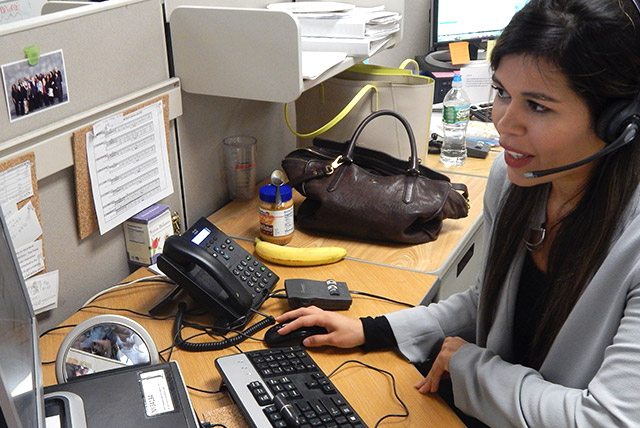Building a call center testing program at a major insurance company
The Challenge.
A Fortune 500 insurance company came to us with a problem. Previously, they supported two separate service applications. One was tailored to customers (occasional, novice users), and one tailored to phone support agents (expert users with a need for speed). Now, they were making the bold step to build a single, new application to support both.
More details…
The application
The application in question would be used by thousands of reps in 12 call centers, supporting 16 million customers.
The goal
Support the team in building the best possible service application optimized for customers, all while maintaining — or even reducing — call handling time for reps.
The reps
The reps were frustrated with the company, feeling like their feedback of their applications had long been ignored.
The Action.
I quickly learned that this was a long-term challenge in need of a long-term solution. Rather than a single knockout punch of research, I designed and implemented a lasting program, conducting usability tests and quantitative surveying with agents, targeting a different topic each month. This was the first time the company had conducted such research with agents.
Building a User Research Program in 3 Stages:
Design it.
Conduct discovery interviews with key stakeholders
Visit call centers, observe, interview reps
Design a pilot study
Launch it.
Start small — launch a pilot with just one call center
Measure results and share success stories with call center managers
Accelerate it.
Spread program to all 12 call centers
Share stories across all departments
Constantly iterate program based on feedback from reps and supervisors
The Result.
I could point to numerous interface changes that resulted from this effort, saving the company a fortune in valuable support agent time. However, the result that I am most proud of is the resulting culture shift. We catalyzed a culture of user-centered design across the organization, and provided an easy way to get agent input on any new design decision.
What happened:
UX Transformation.
The program has continued to survive and evolve. The service application that prompted the program launched to positive response, boasting a 75% implementation rate of research study recommendations.
Corporate Visibility.
The program has been promoted in recruiting materials for prospective job applicants. It was also a finalist for an internal Corporate Quality Award.
Evolution & Spread.
The program’s success has led to the launch of 2 spinoffs, supporting Sales and Claims applications. The model has also been used to launch a similar cyclical research program for customers.
Business ROI.
We were able to measure the program’s success in language executives understand: tens of millions of dollars saved from reduced call time.
For more info…
Read a full case study on this program:



